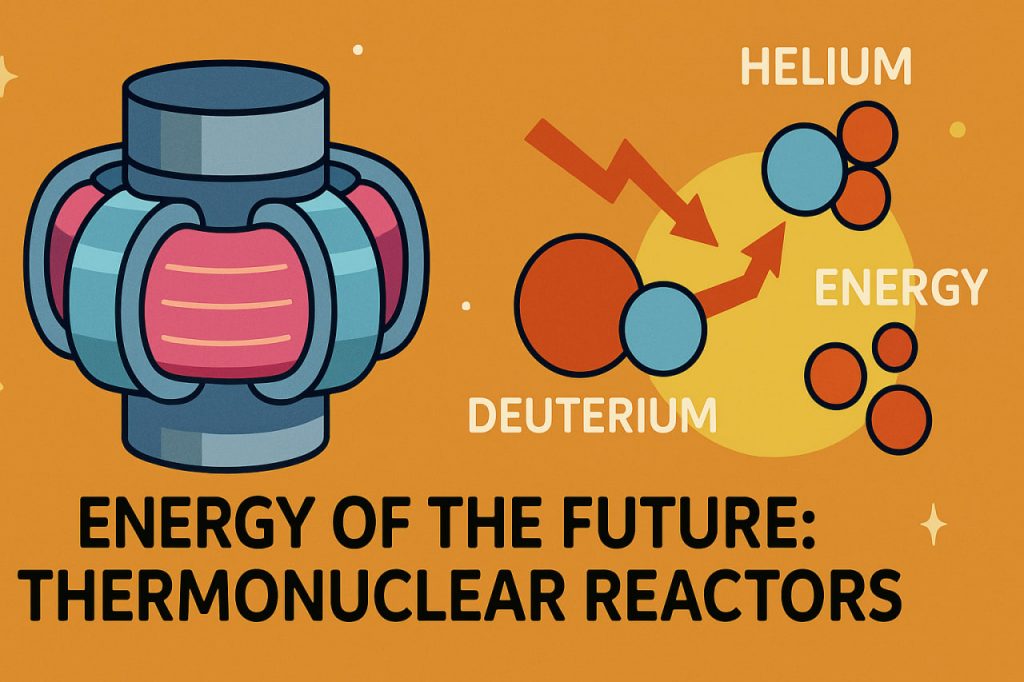Thermonuclear reactors represent one of humanity’s most ambitious technological pursuits — recreating the process that powers the Sun to produce clean, virtually limitless energy on Earth. Instead of burning fossil fuels or splitting heavy atomic nuclei, these reactors fuse light atomic nuclei, releasing enormous amounts of energy without producing greenhouse gases or long-lived radioactive waste.
How Thermonuclear Fusion Works
Fusion occurs when two light nuclei, such as isotopes of hydrogen (deuterium and tritium), collide at extremely high temperatures and pressures. In the Sun, gravity provides these conditions. On Earth, scientists must use powerful magnetic fields or inertial confinement to heat and compress plasma — a superhot, electrically charged gas — to over 100 million degrees Celsius.
Advantages Over Current Energy Sources
- Clean energy – Fusion produces no carbon emissions.
- Abundant fuel – Deuterium can be extracted from water, and tritium can be bred from lithium.
- No meltdown risk – Fusion reactions naturally stop if containment fails.
- Minimal radioactive waste – The byproducts are short-lived compared to nuclear fission waste.
Main Reactor Designs
- Tokamak – A doughnut-shaped device that uses strong magnetic fields to confine plasma. The ITER project in France is the largest example.
- Stellarator – Similar to a tokamak but with twisted magnetic fields for continuous operation.
- Inertial Confinement – Uses powerful lasers to compress and heat fuel pellets in a fraction of a second, as tested at the U.S. National Ignition Facility.
Current Progress
In 2022, researchers achieved net energy gain in a controlled fusion reaction for the first time, proving the concept is possible. Projects like ITER, China’s EAST, and private ventures are pushing toward sustainable, commercially viable fusion power within the next few decades.
Challenges Ahead
The technology still faces obstacles: developing durable materials that withstand intense neutron bombardment, reducing operational costs, and scaling up to commercial plants. However, investment and research are accelerating rapidly worldwide.
The Future of Fusion Energy
If successfully commercialized, thermonuclear reactors could provide humanity with a stable, low-cost, and eco-friendly power source for centuries. They may become the backbone of a global green energy network, complementing solar, wind, and other renewables.
Glossary
- Thermonuclear fusion – The process of fusing atomic nuclei to release energy, similar to reactions in stars.
- Plasma – A state of matter consisting of charged particles at extremely high temperatures.
- Tokamak – A magnetic confinement device shaped like a doughnut for fusion experiments.
- Stellarator – A fusion device with twisted magnetic coils for steady plasma confinement.
- Net energy gain – When a reaction produces more energy than is used to start and sustain it.


